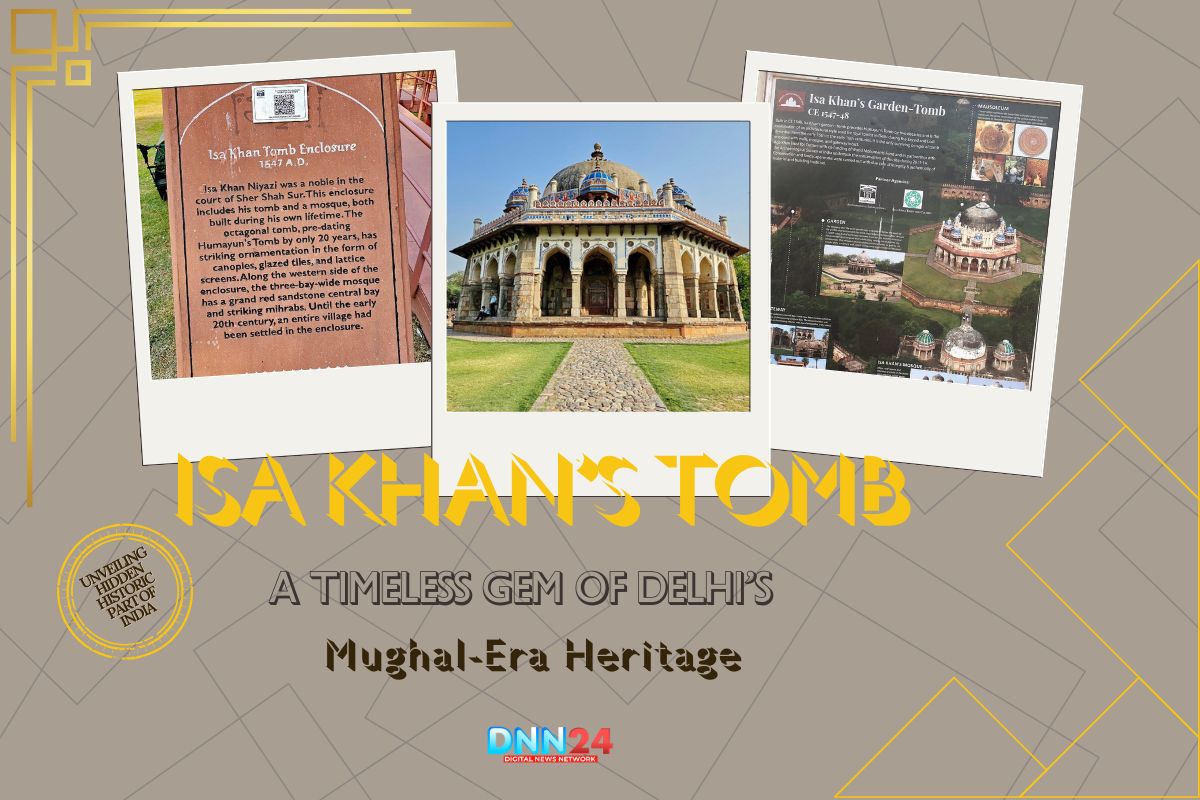Most visitors who come to Delhi are familiar with Humayun’s Tomb, a grand structure that attracts crowds throughout the year. Yet very few realise that beside this famous monument stands another masterpiece, Isa Khan’s Tomb. Built long before Humayun’s own mausoleum, it holds deep historical and artistic significance. The same grandeur may not surround Isa Khan’s Tomb, but it tells a quiet story of early Indo-Islamic architecture and Afghan pride that shaped Delhi’s skyline centuries ago.
Who Was Isa Khan Niazi?
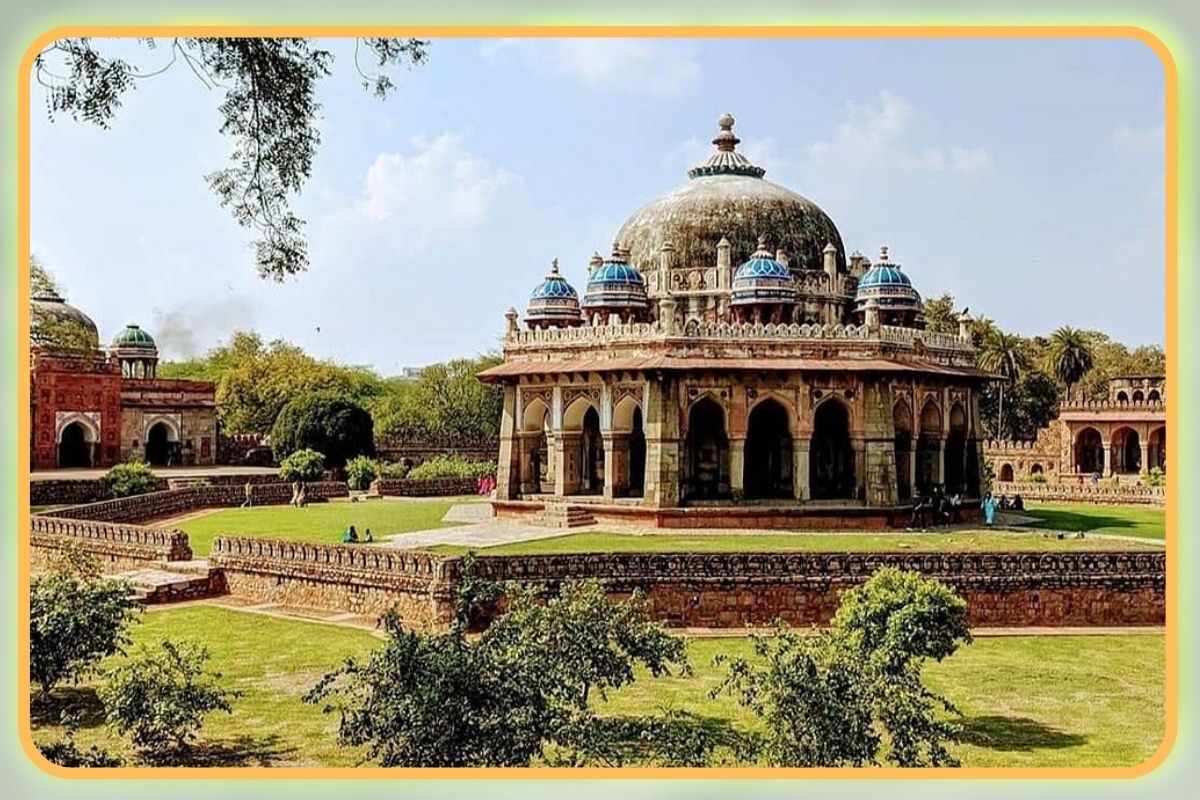
Isa Khan Niazi was a noble in the court of Sher Shah Suri, the Afghan ruler who briefly overthrew the Mughal dynasty in the sixteenth century. Belonging to the Niazi clan, an Afghan tribe to which Pakistan’s Imran Khan also traces his roots, Isa Khan was both a minister and a military commander. He represented the strength and strategic acumen of the Sur dynasty, serving as a trusted aide during its short but influential reign. His prominence in the Afghan administration earned him wealth, respect, and this elegant resting place in Delhi.
Historical Background: In the Shadow of Humayun’s Tomb
The Sur dynasty, under Sher Shah Suri, ruled parts of India for a short span between 1540 and 1555. It was during this time that Isa Khan commissioned his own tomb. Historical records and inscriptions date the structure to around 1547 CE. Built during the dynasty’s height, the tomb reflects the transitional architectural style between the late Lodi and early Mughal periods. Isa Khan’s position was close to the royal family, and his mausoleum symbolised both power and piety. Unlike later Mughal tombs built by emperors, Isa Khan’s was constructed during his lifetime, a testament to his legacy and devotion.
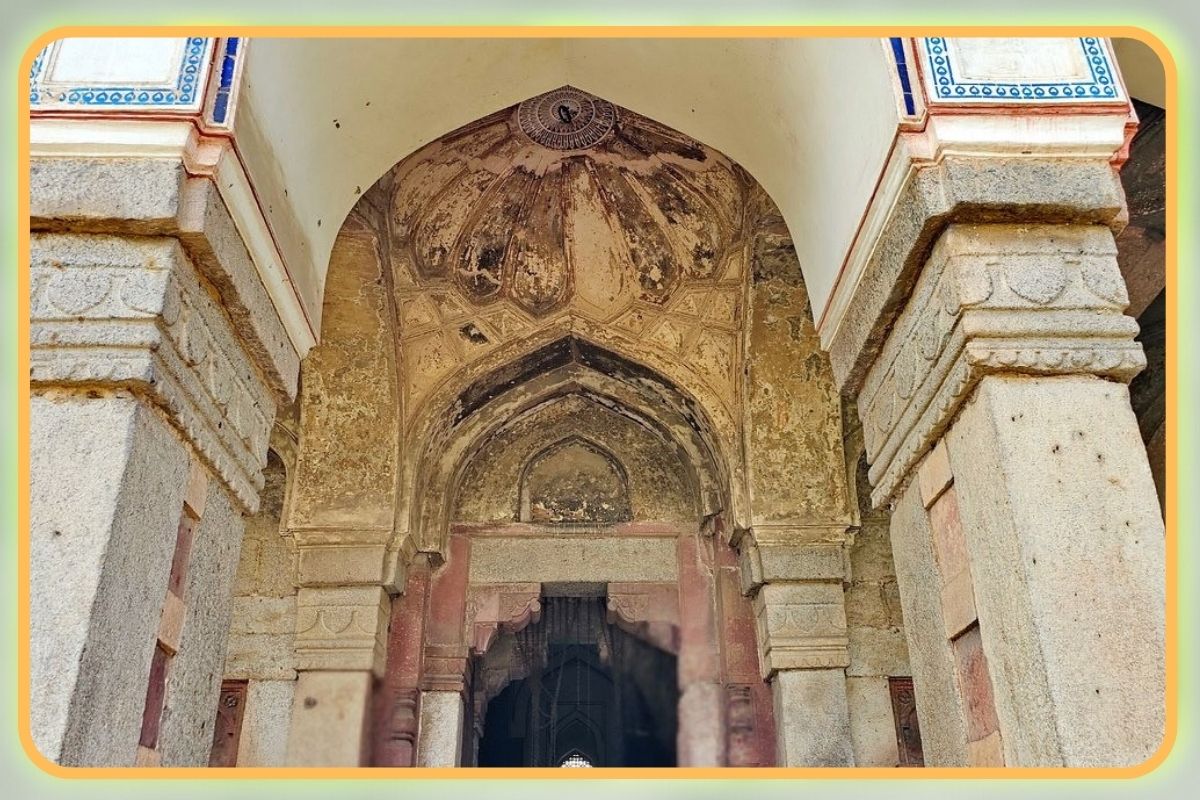
Isa Khan’s Tomb lies within the larger Humayun’s Tomb complex in Nizamuddin East, Delhi. Despite being older, it is often overshadowed by Humayun’s grand mausoleum, which was constructed several years later. The tomb stands within a walled enclosure, surrounded by greenery, small graves, and a mosque. The setting is serene, and its stone pathways and open courtyards evoke a sense of quiet history. Before conservation efforts began in the twentieth century, the site was hidden beneath village settlements and had been almost forgotten by the locals.
Architectural Significance and Tomb’s Construction
Built in 1547 CE, Isa Khan’s Tomb represents a crucial moment in Delhi’s architectural history. The Mughals had not yet introduced their Persian-inspired designs, and the Afghan builders still preferred their Lodi-style approach. The structure is octagonal, with verandahs on each side and a central dome surrounded by chhatris (small pavilions). The absence of minarets, which became common in later Mughal buildings, marks its uniqueness. It stands as the last example of the Afghan architectural tradition before the Persian influence took hold during the reign of Akbar.
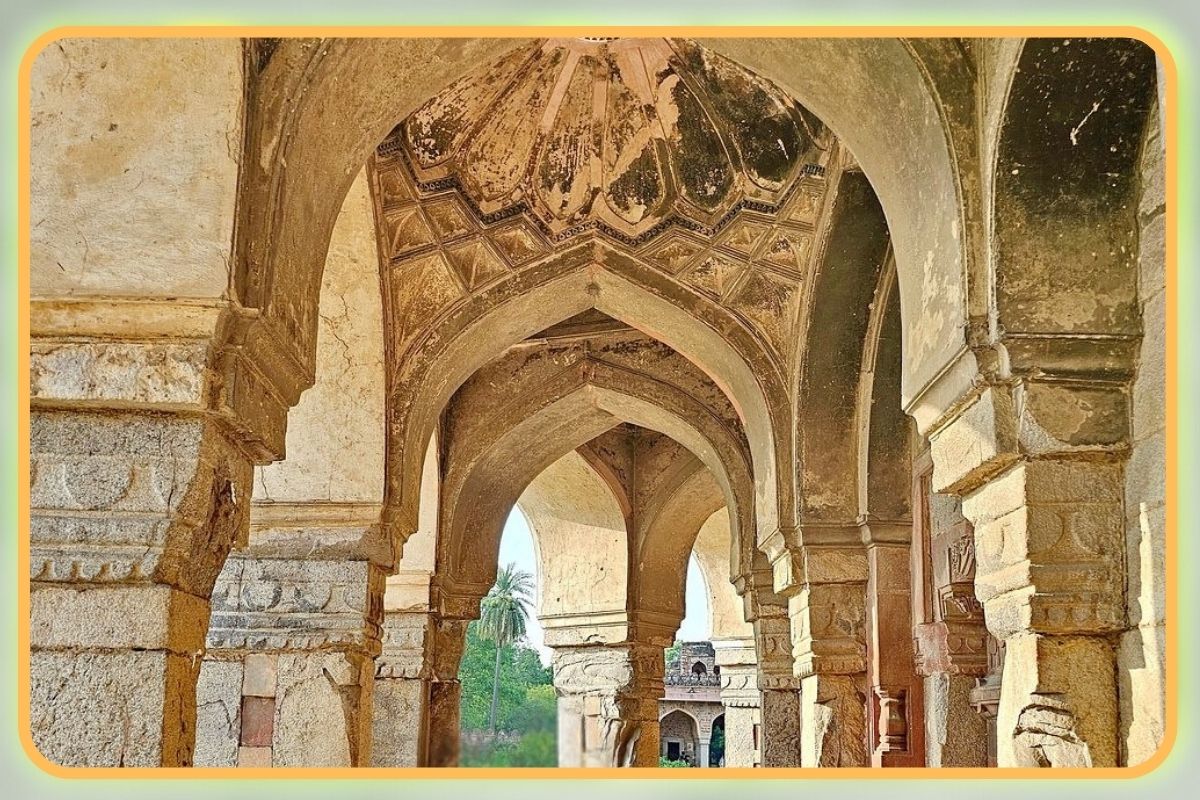
When viewed closely, Isa Khan’s Tomb reveals features that forecast the coming Mughal style. Its symmetry, balanced design, and ornamentation show a move towards sophistication. Yet, its simplicity and strength retain the Afghan spirit. The tomb sits on a raised platform, and its dome is proportionate, not towering. The intricate lattice windows, sandstone carvings, and blue tiles on the dome all contribute to a distinct identity. In essence, it bridges two worlds, the fading Lodi architecture and the rising Mughal elegance.
Distinct Features of Isa Khan’s Mosque
Next to the tomb stands Isa Khan’s mosque, known for its distinctive design. It features three arched openings at the front, but lacks minarets and a large courtyard. This tri-arched façade gives it the name “Trimukhi Mosque,” as noted by historians like Ram Nath. The structure is made of red sandstone and decorated with green and blue glazed tiles. Unlike later Mughal mosques such as Jama Masjid, Isa Khan’s mosque has no entrance hall or massive gateways. It represents a modest yet refined Afghan approach to religious architecture.
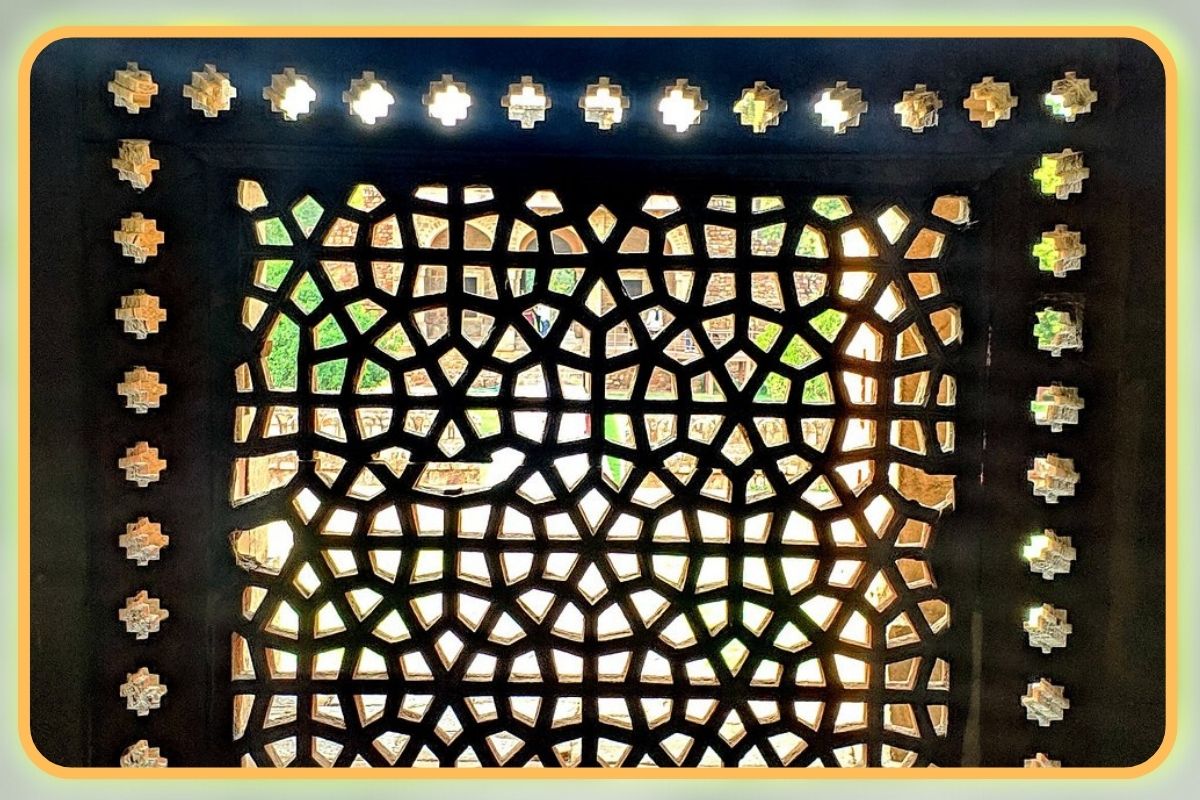
One of the most striking elements of Isa Khan’s Tomb is its use of colour. The builders employed blue, green, and red tiles, which still shine faintly under the Delhi sun. These colours were not added later, they were part of the original design. The blue tiles signify heaven, the green represents peace and eternity, and the red sandstone conveys strength. The combination creates a vibrant yet balanced appearance that distinguishes it from other tombs of the era. The tilework reflects Central Asian influences, showing how Afghan artisans brought their traditions to India.
The Afghan Connection and The Tomb Complex
Isa Khan’s Tomb stands as the finest surviving example of the Lodi style of architecture. The Lodi rulers, who preceded the Mughals, introduced features such as octagonal domes, arched entrances, and minimal ornamentation. These designs were both practical and elegant, expressing a balance of strength and humility. The tomb’s octagonal base, chhatris, and lattice work are characteristic of the Afghan tradition. This architectural phase ended soon after the Mughals established their rule, making Isa Khan’s Tomb a final echo of a vanishing style.
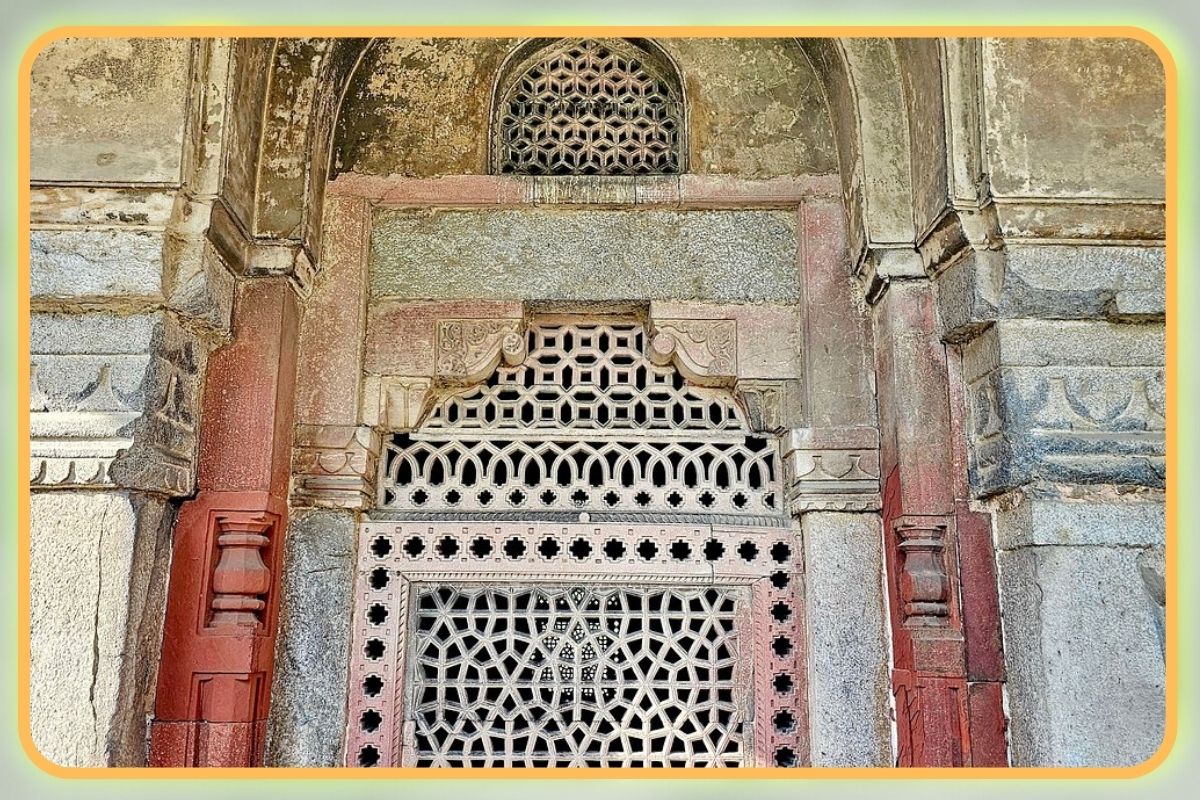
Inside Isa Khan’s enclosure, there are several other graves besides his own. These belong to his family members, possibly his wife, relatives, or close associates. This tradition stems from older Afghan and Islamic customs, where noble families were buried together in a single enclosure. In that sense, Isa Khan’s Tomb is both a mausoleum and a family graveyard. The layout mirrors the concept of unity in death, reflecting the faith and kinship common in the medieval Islamic world.
Transition from Afghan to Persian Style
Isa Khan’s Tomb marks the turning point from the Afghan-Lodi architectural language to the Mughal-Persian style. After this period, structures such as Humayun’s Tomb, the Red Fort, and Jama Masjid began to adopt Persian influences, including large courtyards, marble façades, and lofty domes. Isa Khan’s modest yet artistic structure thus serves as a historical link. It demonstrates how the builders of the sixteenth century experimented, blending Afghan sturdiness with emerging Persian delicacy.
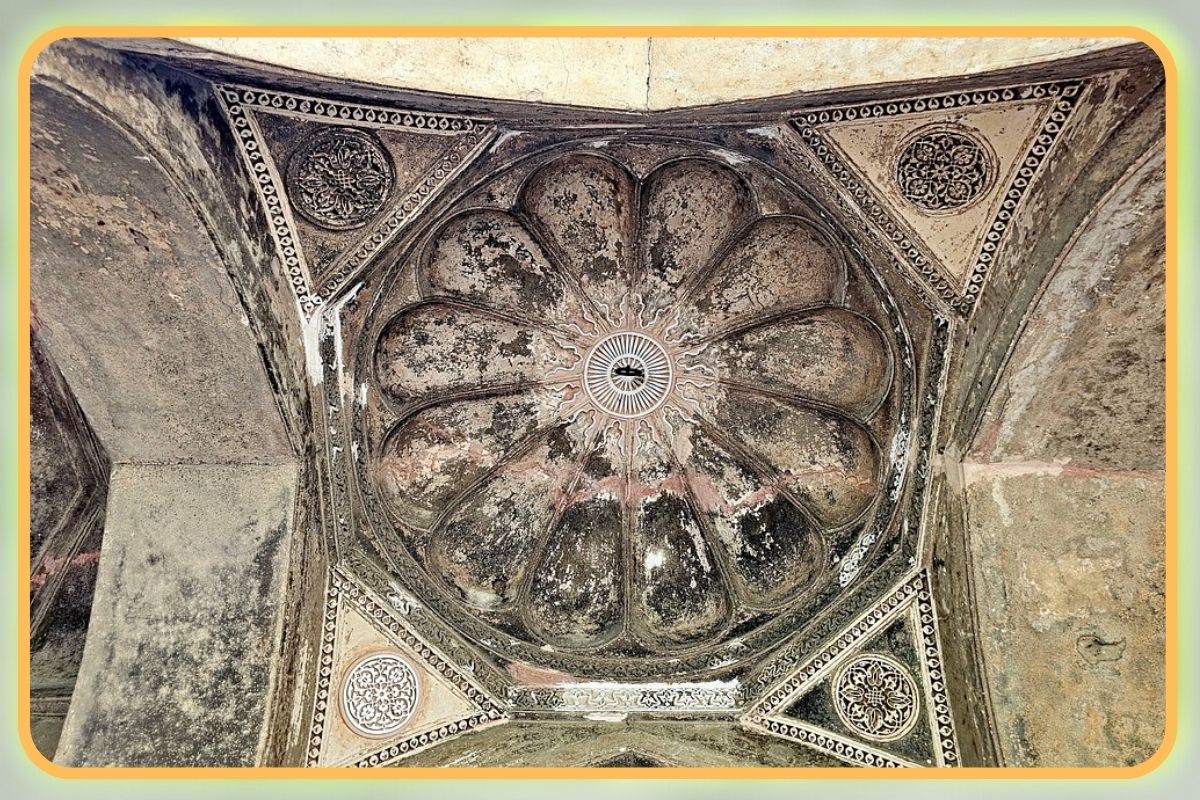
Conservation of Isa Khan’s Tomb began in earnest in 2011 under the supervision of the Archaeological Survey of India and the Aga Khan Trust for Culture. The team carefully restored the tilework, repaired the dome, and revitalised the surrounding gardens. However, maintaining ancient monuments is never a simple task. Over time, pollution, bird droppings, and neglect had darkened the dome and damaged carvings. Restoration experts avoided repainting or over-cleaning to preserve the original texture. Their challenge was to balance preservation with authenticity, ensuring that the tomb’s centuries-old charm remained untouched.
The Neglect and Hidden History
Despite its beauty, Isa Khan’s Tomb remained hidden for centuries. Until the twentieth century, the area was covered by a village settlement. Locals often did not even know that a sixteenth-century Afghan noble lay buried beneath their land. Only after extensive excavation and conservation did the tomb come back to light. This long neglect explains why the monument is still less known than its neighbour, Humayun’s Tomb, which has always drawn royal attention and state funding.
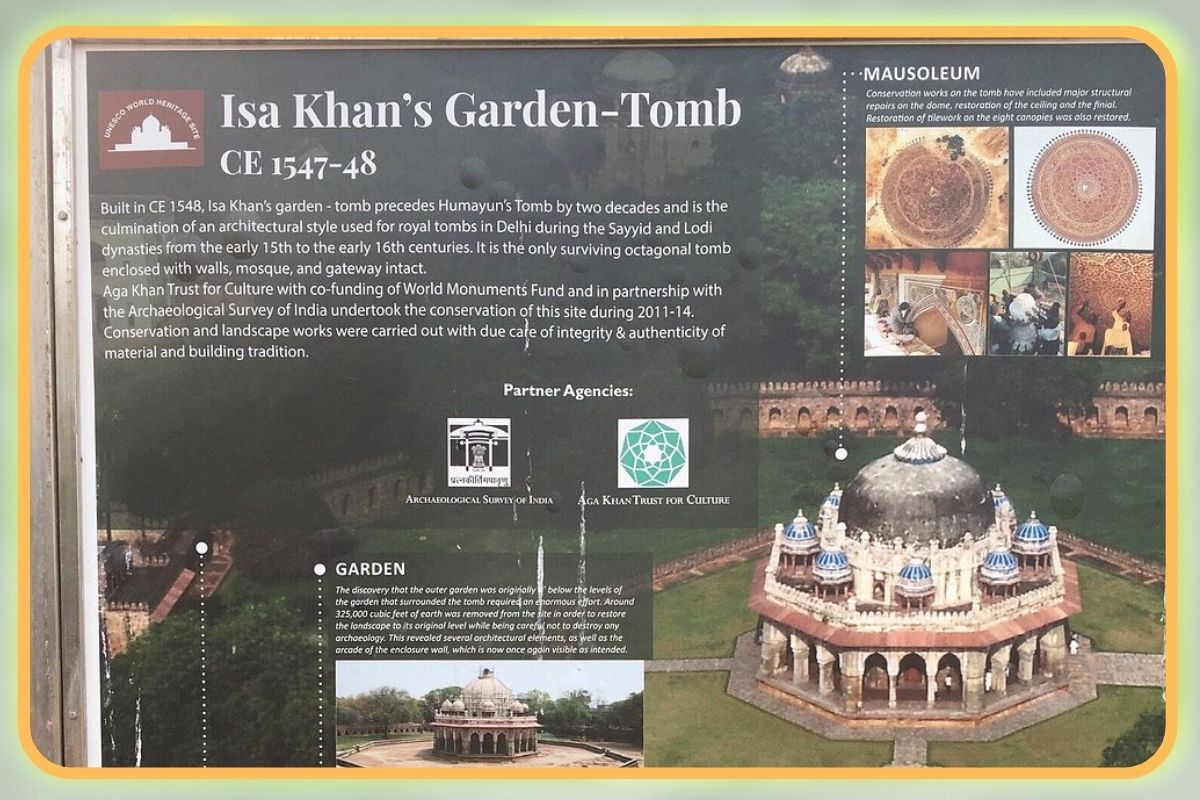
Several reasons contribute to Isa Khan’s Tomb being overlooked. First, Isa Khan himself was not a ruler, so his name does not appear in royal chronicles with the same prominence as Humayun or Akbar. Second, the monument’s location within Humayun’s complex often causes visitors to pass it without realising its historical worth. Third, tourism promotion focuses on larger, imperial monuments. Yet for those who explore deeply, Isa Khan’s Tomb offers a glimpse into Delhi’s layered past—a story of forgotten power and artistry.
Cultural Importance and Isa Khan’s Heritage
Today, Isa Khan’s Tomb stands as an essential chapter in India’s architectural heritage. The gardens are peaceful, and the stone pathways lead visitors through history. The play of colour on the walls, the calligraphy on the arches, and the silence inside the tomb create an atmosphere of calm reflection. Those who walk through its gates can feel the transition of eras from Afghan dynasties to Mughal grandeur. The site invites every visitor to look beyond the famous names and discover the quiet builders of Delhi’s past.
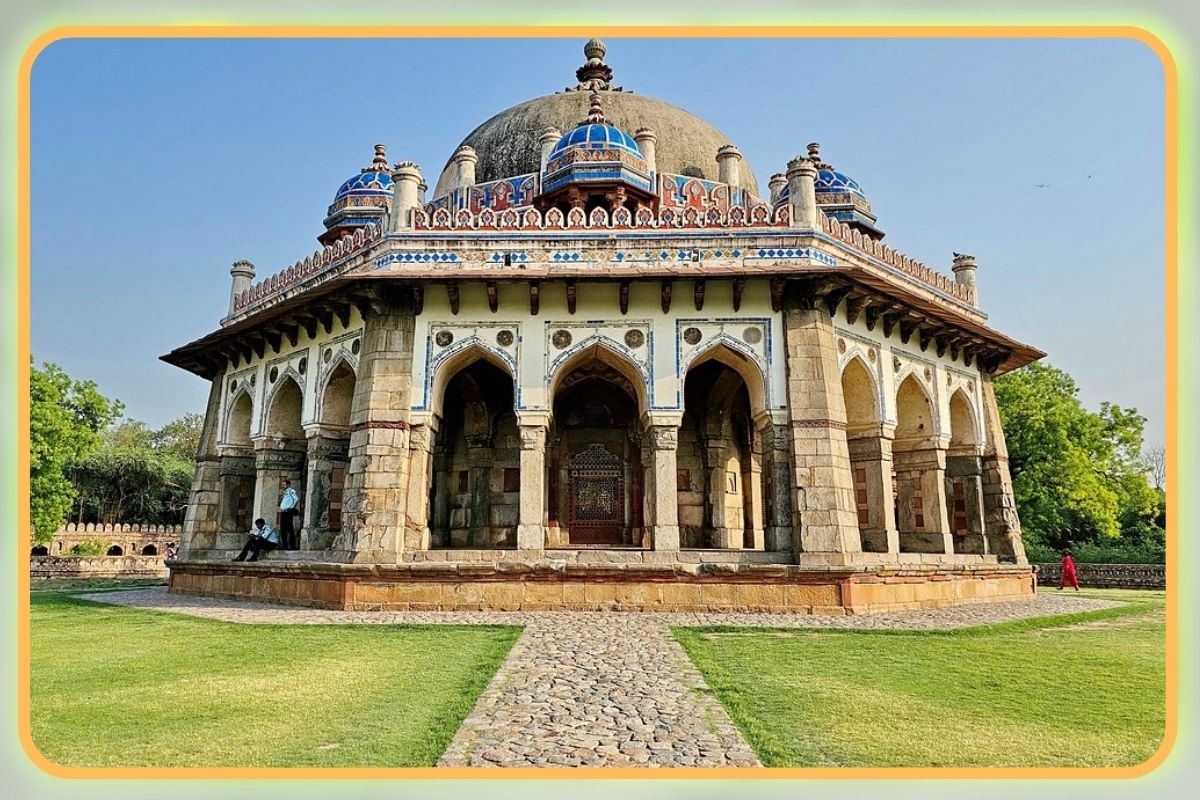
Isa Khan’s Tomb is more than an old monument; it is a bridge between dynasties, styles, and centuries. It preserves the memory of an Afghan noble who served his king with loyalty and vision. The structure’s octagonal beauty, colourful tiles, and quiet dignity still speak of a time when Delhi was being shaped by courage and culture. In remembering Isa Khan, we honour not just a man, but an era that set the foundation for the Mughal splendour that followed.
Also Read: Qudsia Bagh: Delhi’s Forgotten Royal Garden of Freedom and Heritage
You can connect with DNN24 on Facebook, Twitter, and Instagram and subscribe to our YouTube channel.

